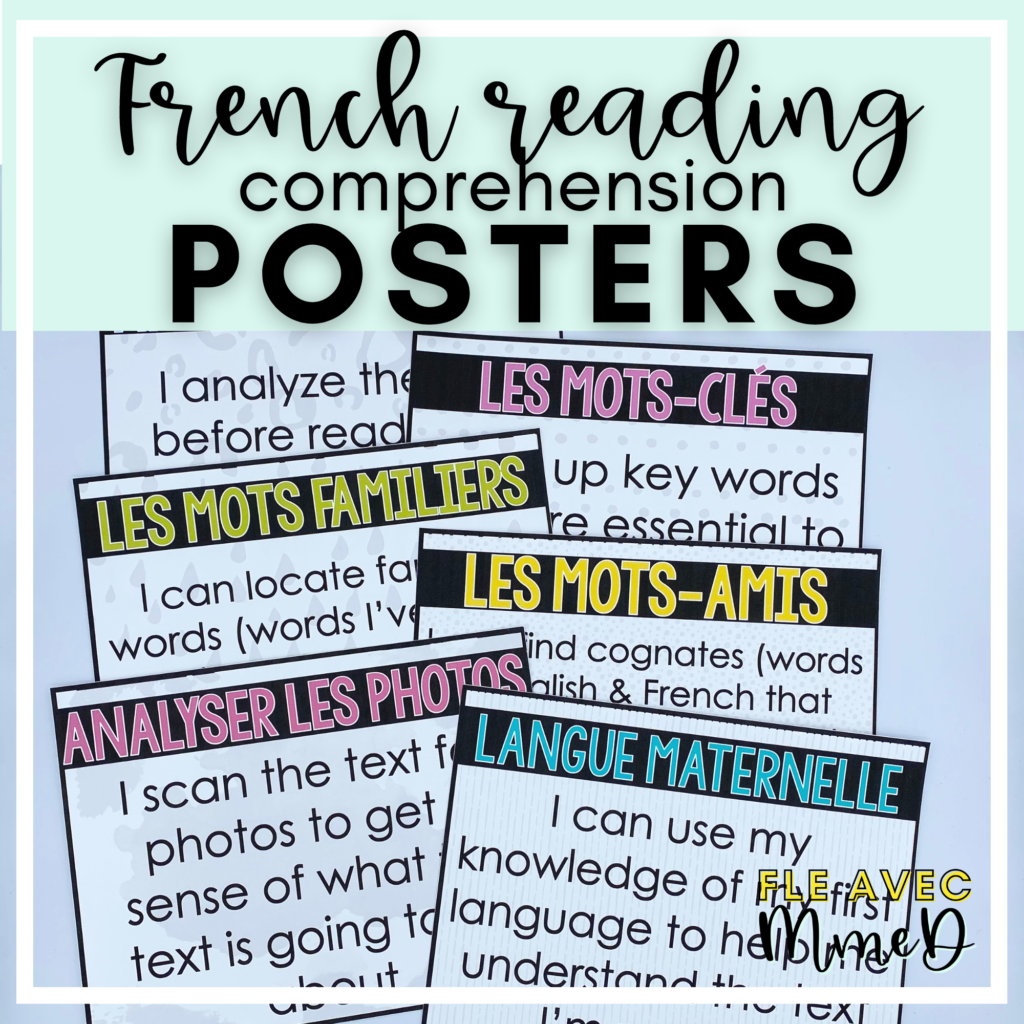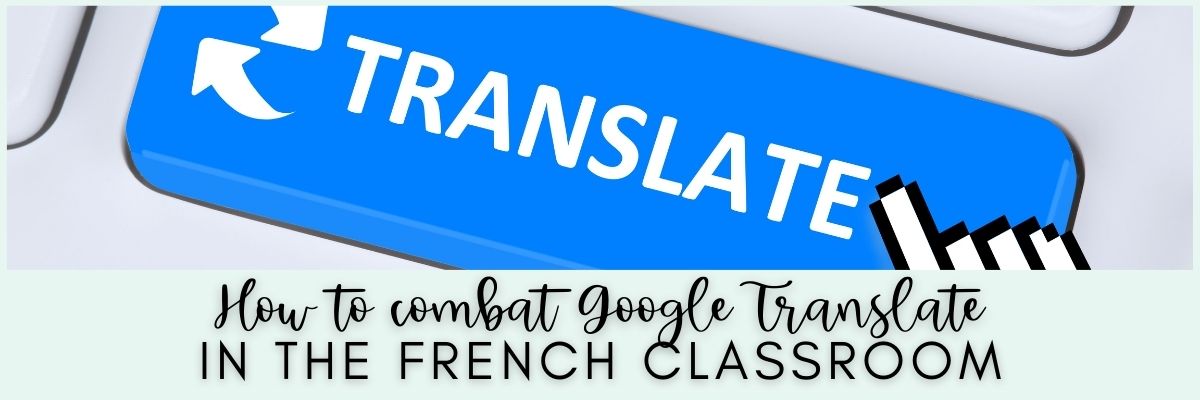
I have been teaching Core French for six years now. In the first few years of my teaching career, Google Translate was a HUGE problem in my French classroom. While I didn’t have a community of teachers to reflect with, I certainly lost a lot of sleep reflecting on how to solve the issue. Today I am going to share with you how I address Google Translate in my French classroom.
Why do French students use Google Translate in the first place?
I’m in about a dozen Facebook groups for French teachers. At least once a week I see French teachers ask the groups about what to do about Google Translate.
Very rarely do I see French teachers reflect on WHY students use Google Translate in the French classroom.
P.S. in this space, we do not blame students for fun. We understand that MOST students want to be successful. However, their brains have not yet developed and will not develop until they are 25. Therefore, they do not make the best choices.
The question though – is why do our bright, hardworking, and talented students use Google Translate instead of actually doing their work? This blog post is specifically addressing our good-intentioned students and classes who end up using Google Translate despite very clearly having the ability to do the work themselves.
You’re not going to like the answer.
It’s because they don’t know how to do the work.
That’s right. In my opinion, Google Translate continues to be an issue in French classrooms where students memorize vocabulary lists and explicitly learn French grammar.
Memorizing vocabulary lists and French grammar is not learning a language. The problem with these two things is that students tend to replicate vocabulary and grammar in the exact context in which they learned the concepts. As soon as you move on to the next unit, students are unable to transfer their knowledge to the new context.
So you give your students this mega writing task. It requires them to use the vocab list they memorized and use irregular and regular verbs in the present tense. However, despite in-class “practice” your students feel that they are unable to complete this task. They don’t know where to start and they just don’t know what to do with those VERBS.
So they panic. They want an A, they don’t want to disappoint you, and so they use Google Translate.
Before you get your French students to write, you need to be expose them to A LOT of listening and reading
This pedagogy is called Comprehensible Input. It has not only changed my students’ confidence, their ability to speak, read, write, and listen in French, but it has also increased my joy when it comes to teaching French.
The idea is simple.
Before we ask our students to write anything in French, we need to expose them to a ton of listening and reading.
This is the INPUT part of learning French. You see, without input, how can we expect our students to OUTPUT (write and speak)?
To be honest, I am not an expert on Comprehensible Input. I am still learning about it. Check out the teachers below to learn more about CI in the French classroom.
- Elodie Channa from Comprehensible Input On
- Devon from La Libre Language Learning
- Benjamin Tinsley from Afro Franco
The absolute best part is that when you expose your students to tons of reading and listening, without ever explicitly teaching grammar, they will learn SO much. This is the way to go when it comes to teaching French!
Avoid Google Translate in the French classroom by ensuring that your activities are level-appropriate
We tend to “lose” our students when the task that we have given our students is too difficult. The “task” is often a writing assignment or writing project in our context. However, sometimes we may also find this to be the case with French reading comprehension.
The best way that I have avoided Google Translate with reading comprehension is to teach my students very specific strategies.
I have a lengthy blog post dedicated to these strategies.

Embrace imperfection – embrace mistakes
Students tend to use Google Translate in the French classroom when they know that their grammar is going to be evaluated.
Again, this seems to occur in classes that focus on grammar acquisition.
Dear teacher – tell your students that it is normal to make mistakes in French. When students are fixated on writing perfect sentences, they are not taking risks with the language. They are stressed about getting a good mark. And that is the problem.
Please do note that it’s not that I never evaluate grammar or that I never teach grammar explicitly. I do. There is a time and place for these things. However, it is not at the beginning!
As soon as my students understand that I wasn’t looking for perfection, Google Translate became a non-issue. Embracing imperfection in conjunction with TONS of input has meant that my student are communicating stronger than ever (in writing and orally).
Make your French classroom a phone-free zone
Last but not least, my classroom is a phone-free zone. This includes me too. I am not on my phone when my students are with me.
I mean, I can’t even sit on my computer and read a quick email. When my students are in front of me, my full attention is on them. My expectation is the same for them.
My classroom is a space of mutual love and respect, and I have made it very clear to my students that phones do not belong in that space.
This (and being quick to communicate home) really helps with reducing Google Translate temptations in the French classroom.


